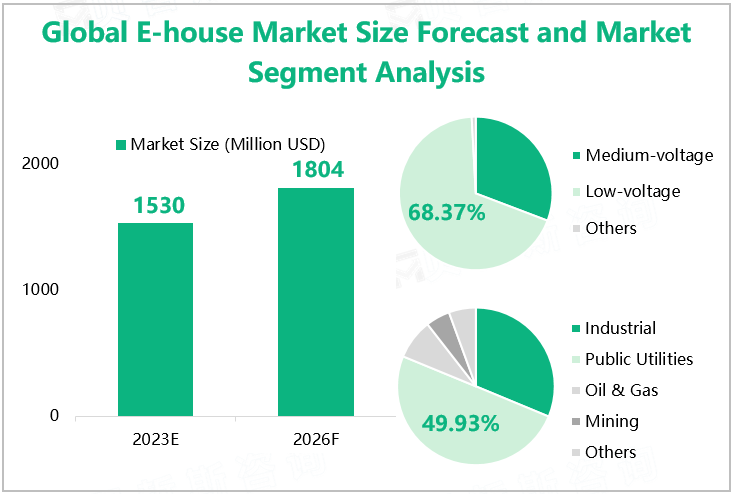An electrical house (E-House) is a prefabricated modular steel outdoor enclosure that can accommodate medium voltage (MV) and low voltage (LV) switchgear and auxiliary equipment. It can achieve short on-site installation, commissioning, and start-up time, and is a high-quality and efficient alternative to traditional on-site civil engineering substations and electrical rooms (such as concrete, brick building, etc.).
Overview of the Global Prefabricated Electric House Market Development and Segmented Market Analysis
According to our research data, the global E-house market is expected to reach $1530 million in 2023. In the future, with the innovation and progress of technology, as well as the increasing emphasis of the government on building energy conservation and environmental protection, the market will experience further growth. It is expected that the global market for prefabricated electrical homes will increase to $1804 million by 2026.
According to different scene requirements, E-houses can be divided into low-voltage E-houses and medium-voltage E-houses. Among them, medium-voltage E-houses dominate the market. According to our data, the global low-voltage E-house segment market is estimated to have a size of $1046 million in 2023, with an expected market share of 68.37%.
From the perspective of downstream applications, E-houses are becoming increasingly popular in fields such as public facilities, oil & gas, mining, and industry due to their characteristics of prefabrication, fast installation, and reliability. Among them, the public utilities sector is the largest downstream application market.
Global E-house Market Size Forecast and Market Segment Analysis

Source: www.globalmarketmonitor.com
Market Analysis of E-houses in Major Regions/Countries
Research shows that North America is the industry's largest revenue market. Data shows that the revenue scale of the North American E-house market is estimated to be $327 million in 2023, with an estimated market share of 21.37%; The European market is expected to rank second with a share of 19.22%. From a national perspective, Asian countries such as China, Japan, and India also hold relatively high market shares in the global market.
